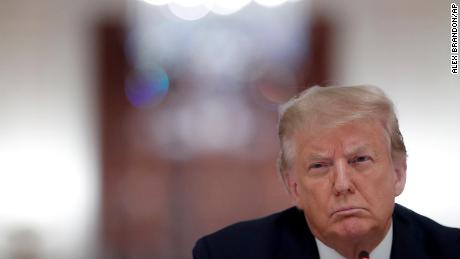Trump’s threat to defund education adds pressure to schools squeezed by coronavirus
The shuttering of schools across the country resulted in the loss of more than 737,000 local education jobs between March and May, though districts added roughly 70,000 positions last month.
Meanwhile, the average district may have to spend an additional $1.8 million to institute and adhere to health and safety protocols, according to a joint estimate by the School Superintendents Association (AASA) and the Association of School Business Officials International.
Education groups quickly slammed Trump’s remarks.
“Nothing that Donald Trump has said in the last 48 hours has been safe or responsible,” Lily Eskelsen Garcia, president of the National Education Association, told CNN’s Brianna Keilar Wednesday, also referring to Trump ramping up the pressure this week for schools to reopen.
At the same time, school districts are also expecting to take a hit in state support, which accounts for about 47% of funding. State sales and income tax revenues have plummeted amid governors’ mandates that residents stay at home and non-essential businesses close, which prompted the loss of millions of jobs.
Though those orders are being lifted, at least two dozen states are now pausing or rolling back their reopening plans amid the recent surge in cases. Tax revenue shortfalls could hit $200 billion for fiscal years 2020 and 2021, according to a recent estimate from the Tax Policy Center, a non-partisan think tank.
Since states have to balance their budgets, they typically have to cut spending when revenue falls. And education is often a target since it makes up a large chunk of state budgets.
For now, many states are holding off on making deep reductions in hopes of additional federal funding and an improved economy in the second half of this year.
Colorado slashed about $540 million from K-12 operations for the current fiscal year, but the state received $510 million in federal relief money for schools. Lawmakers made “some pretty big cuts” to state support knowing that some federal relief funding would “help see them through,” said Democratic state Rep. Daneya Esgar, chair of the Colorado General Assembly’s Joint Budget Committee.
Ohio Republican Gov. Mike DeWine cut $300 million in public school funding for the fiscal year that ended June 30.
Though some of the reductions are being offset by federal funding, it will not make up all of the losses, said Wendy Patton, senior project director of Policy Matters Ohio, a left-leaning group. Schools are contending with higher costs to teach students amid the pandemic, she said.
“I’ve seen spreadsheets that show a great number of districts showing red ink for the fall,” Patton said. “They are getting less money than they anticipated.”
![]()




